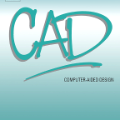We propose a fully automatic annotation scheme which takes a raw 3D point cloud with a set of fitted CAD models as input, and outputs convincing point-wise labels which can be used as cheap training data for point cloud segmentation. Compared to manual annotations, we show that our automatic labels are accurate while drastically reducing the annotation time, and eliminating the need for manual intervention or dataset-specific parameters. Our labeling pipeline outputs semantic classes and soft point-wise object scores which can either be binarized into standard one-hot-encoded labels, thresholded into weak labels with ambiguous points left unlabeled, or used directly as soft labels during training. We evaluate the label quality and segmentation performance of PointNet++ on a dataset of real industrial point clouds and Scan2CAD, a public dataset of indoor scenes. Our results indicate that reducing supervision in areas which are more difficult to label automatically is beneficial, compared to the conventional approach of naively assigning a hard "best guess" label to every point.
翻译:我们建议一个完全自动的注解方案, 将原始的 3D 点云云和一套装配的 CAD 模型作为输入, 以及输出具有说服力的点点点标签, 可以用作点云分解的廉价培训数据。 与手动说明相比, 我们显示我们的自动标签准确, 同时大幅缩短批注时间, 并消除人工干预或数据集特定参数的需要。 我们的标签管道输出的语义类和软点向对象评分可以被二进标准的单热编码标签, 门槛化为带模糊点未贴标签的微弱标签, 或者在训练期间直接用作软标签。 我们评估了实际工业点云数据集PointNet++的标签质量和分解功能, 以及室内场景的公开数据集Scand2CAD。 我们的结果表明, 减少对难以自动标出标签的地区的监管是有好处的, 与对每个点进行天真的硬“ 猜测” 标签的传统方法相比。




